If you are an Erasmus student in Bucharest and maybe you got tired of seeing only cars and buildings thus want to breath some fresher awakening air, I am here to propose you a one day journey in a beautiful place located at the bottom of the mountain. So, let’s hop on a train from Bucharest North railway station and go away from the crowded capital of Romania to a mountain city surrounded by green areas. Where? Sinaia.
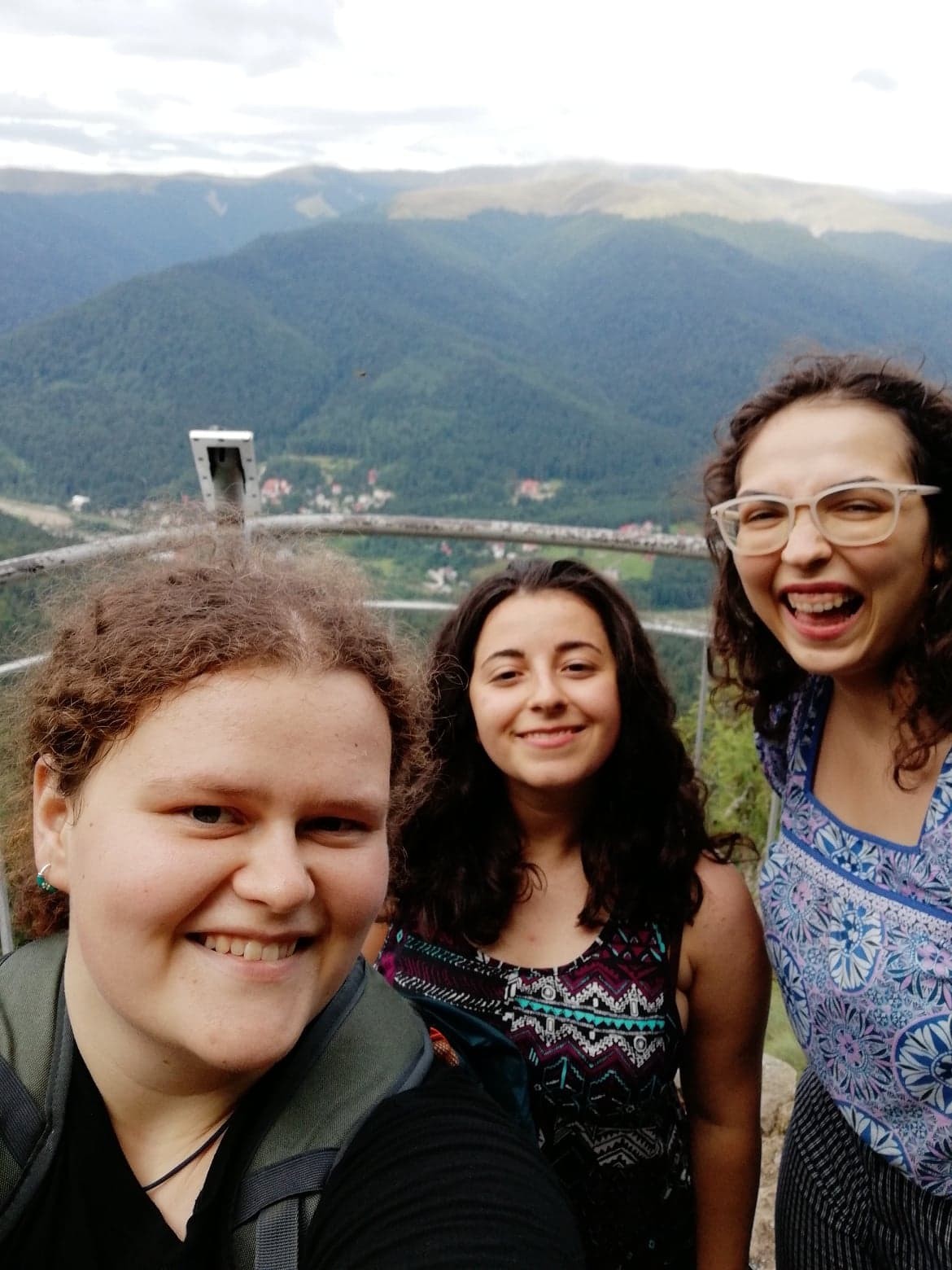
How long it takes to go from Bucharest to Sinaia?
A journey by train from Bucharest to Sinaia lasts for about 1 hour and 30 minutes with an interregio train ( a fast train ) that costs 40 lei, meaning 8 euros, and 2 hours and 30 minutes with a regio train ( a slower train ) which ticket costs 20 lei meaning 4 euros. With the personal car you can use the road DN1 and drive all of the 125 kilometers in approximately 1 hour and 45 minutes.
I’ve been many times in Sinaia both by train and car, but the option with the train is more convenient because in the weekends or on holidays and free days, the DN1 road gets very crowded.
Why is worth it to visit Sinaia?
Sinaia is a mountain city situated in the Southern Carpathians in Prahova Valley in the county with the same name ( Prahova ). Being a mountain city, Sinaia is worth visiting due to its landscape over the mountains that have a lot of hiking trails perfect for nature lovers, trekkers and mountaineers or just for simple people who want to enjoy a walk in the forest.
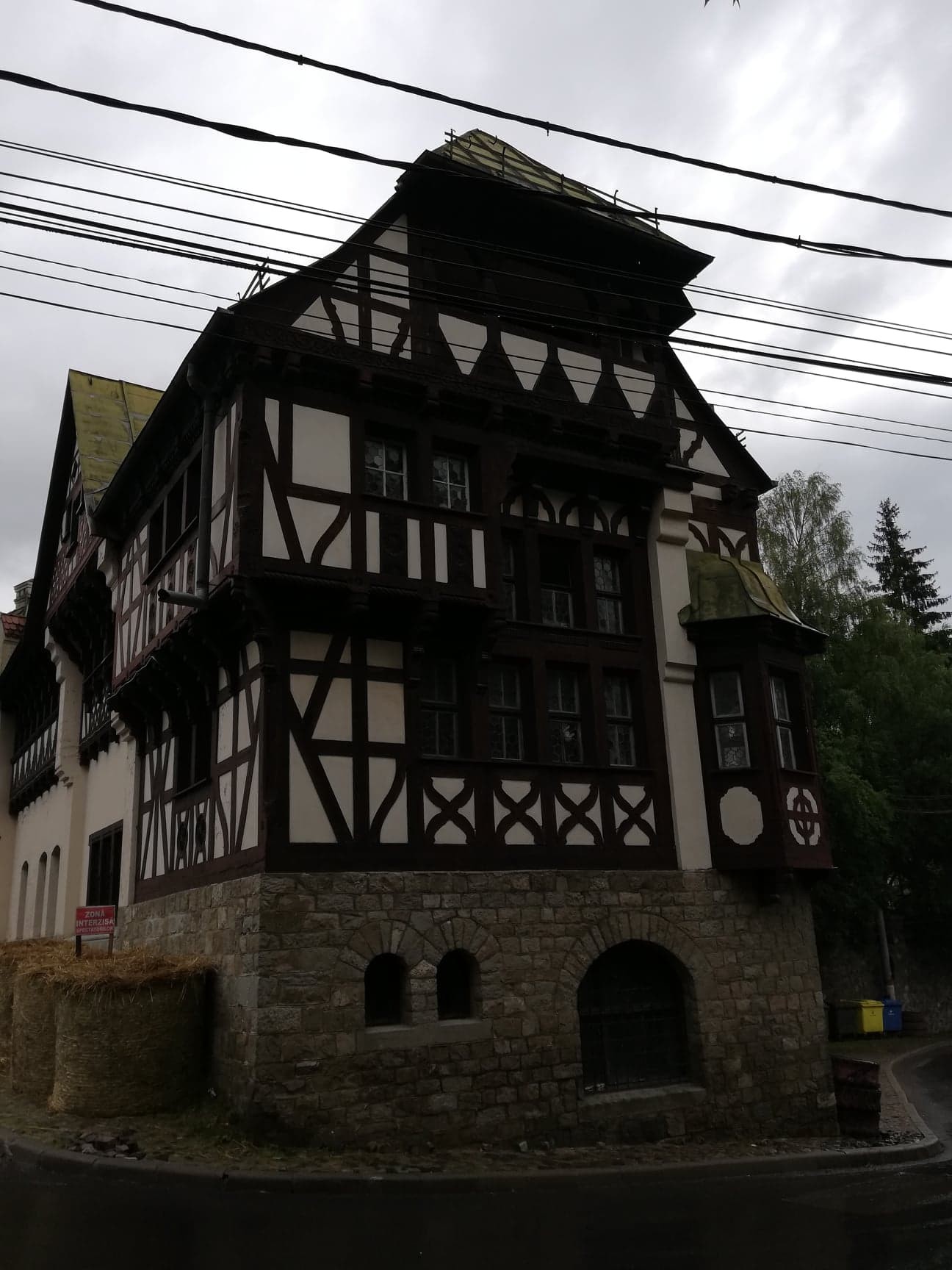
If this kind of trip doesn’t fit you, don’t worry, there are other things to do in the city and outside of it. Sinaia offers main attractions that have an important role in the historical and cultural life of the city. This main attractions are:
-
The Peleș Castle
-
The Pelișor Castle
-
The Sinaia Monastery
-
Casino Sinaia
-
"George Enescu" Memorial House
-
The "Franz Josef " Cliffs
-
The Royal Railway Station
As you can see there are many attractions that people can get to know and, in fact, although Sinaia is a mountain resort, at the same time, the city is also a cultural place.
Small history of the city and why it is important in Romania’s history: The royal residence
To understand a bit more why Sinaia develops as a cultural place even though the city is not so large and located in the middle of nature, I am gonna story tell a few significant aspects that have shaped over the years the mountain city.
At the end of the 19th century, the royal family of Romania established their summer residence in Sinaia and started to build the Peleș Castle which resisted until today.
After this major event and during the reign of the Kings, Sinaia developed even more and other constructions were set like the royal train station, the casino, the castles, a lot of fancy houses and hotels such as The Caraiman Hotel, The Furnica Hotel, The Take Ionescu Villa. Beginning with the King Carol I, Sinaia became a place of national and international interest.
Among all of the main attractions, Peleș Castle is one of the most famous, appreciated and visited place, the construction being the landmark of the mountain city, Sinaia.
My one day journey and experience in Sinaia
I am both a trekker and a culture or history lover, so I planned my trip to Sinaia in a way of satisfying the two parts that I enjoy while travelling. In this one day journey I get to see The Royal Castle and hike through the mountains to “Franz Josef” Cliffs using the famous path of the King.
Visiting the Peles Castle. How to get there?
I travel with the train and I get down of it when I meet the Sinaia train station. I check on Google Maps how much it takes by walk from where I am to the castle and I find out that it takes about 30 minutes to get there and because of that I decide to walk the way. I cross the street, climb some stairs, I pass the "Dimitrie Ghica" Park and The Casino. I enter the Ferdinand Boulevard and than the Alley of Peles that brings me straight to the castle.
A tourist attraction
I arrive in front of the Peles Castle and notice that there are many tourists waiting in line to buy tickets for visiting the castle. I don’t panic because I expected the situation. It is known and it is also true that Peles Castle is visited by many people all the time and especially on weekends and not only by romanians.
I wait in the line and I hear different languages as romanian, english, french, spanish, chinese, german and I am kind of glad that the place gets the attraction that it deserves.
How much it costs a ticket?
For visiting only the ground floor a ticket for an adult costs 30 lei and for a student 7,5 lei. To visit the ground floor+the second floor, the tour costs double, so 60 lei for adults and 15 lei for students.
Photographing and filming is not allowed and visitors who want to take pictures should pay a fee of of 35 lei and for recording the fee is 60 lei. That’s why I don’t have photos to share with you from the interior of the castle.
When is Peles Castle open?
The castle is open from Thursday to Sunday. On Monday the museum is closed. On Thursday Peles is open from 9.00 AM to 16.15 PM. On Wednesday is open from 11.00 AM to 16.15 PM. In the rest of the days, the Peles Castle is available for visiting from 09.15 AM to 16.15 PM.
Inside the royal residence
After I get my student ticket I enter the building alongside with a group of people and a quide. This is the way of visiting. The guiding can be in English and other 3 or 4 languages, so don’t worry about not understanding anything.
The visitors, including myself follow the guide who is stopping in most of the rooms to tell us various aspects about the things that we see. Our eyes are looking around at the fancy interiors with the finest furniture made out of wood and worked by the greatest skilled craftsmen from Austria and Germany.
On the walls are exhibited paintings and there are many works of art, ceramics, statues, glazed ceilings. I am not a very huge fan of fancy, luxurious items, but I appreciate the wooden furniture with all of the beautiful small details.
I walk through many rooms that once were inhabited by the Royal family of Romania. The ones that impress me the most are the royal bathrooms, the royal library that has a secret door behind a bookshelf through which the King could take refuge in other rooms of the castle, the theater hall, the concert hall, the painting studio of the Queen.
The Halls of arms
There is a room that gets my attention immediately and that’s the Halls of arms where it is exhibited the collection of arms belonging to Carol I. As far as I understand, the collection consists in over 4000 European and Oriental pieces dating back from the 14th to the 17th centuries. Among these, a piece that truly stands out is a complete armour for horse and knight, unique in Romania.
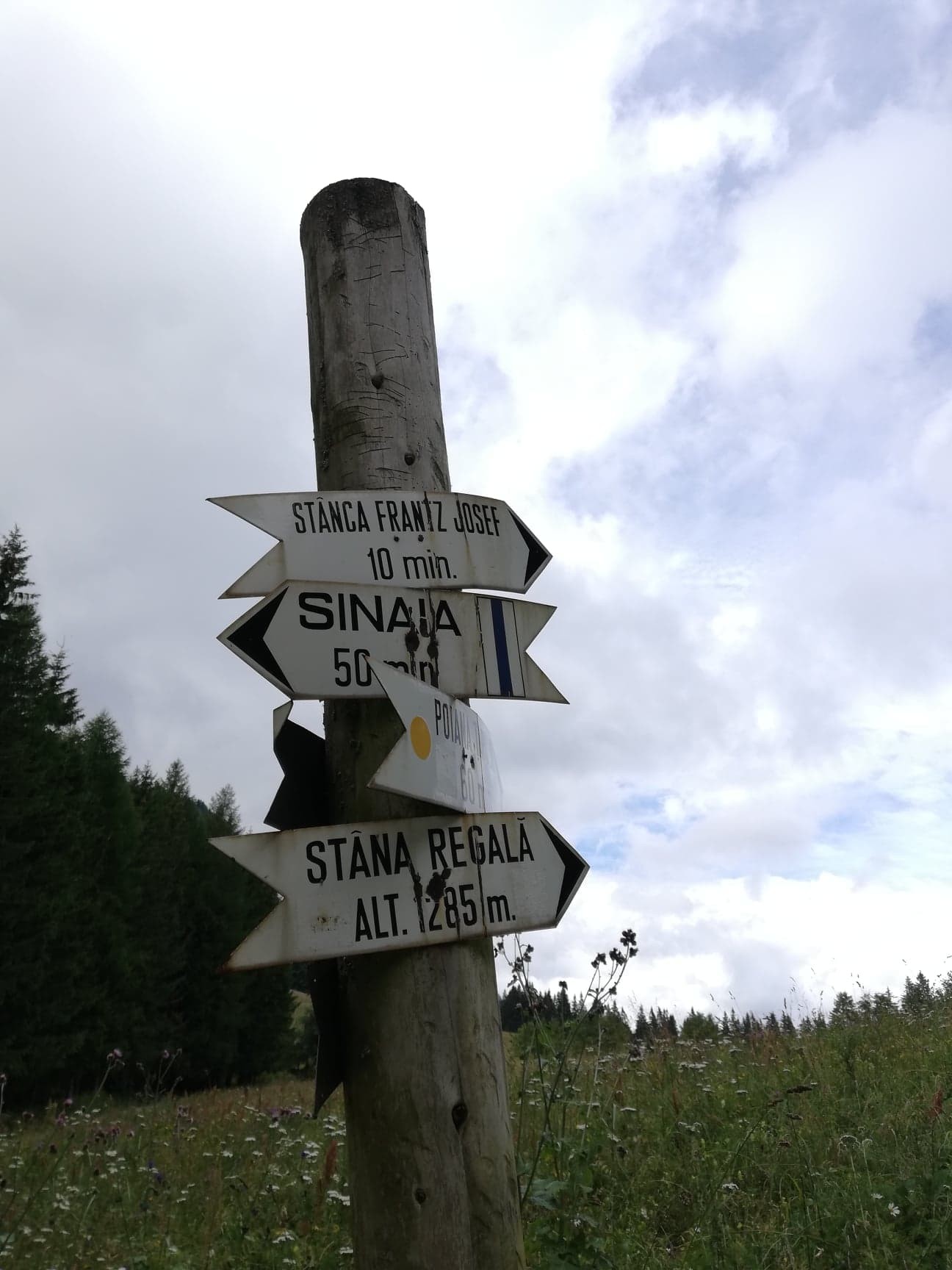
After the tour I get out of the castle and because it is getting kind of late and my plan is to also hike, I don’t spend a lot of time wondering around, but I try to find the beginning of The Royal Path that would take me high up to the “Franz Josef” Cliffs where a large, beautiful panorama over the city and the mountains waits for me.
Following the steps of the royal family
After some time of wandering around I manage how to find the right path by looking at all of the indicators I encounter in my way. On the one that I would need to follow it is written “Valea Stânii” and it is symbolised with a blue stripe on a white background.
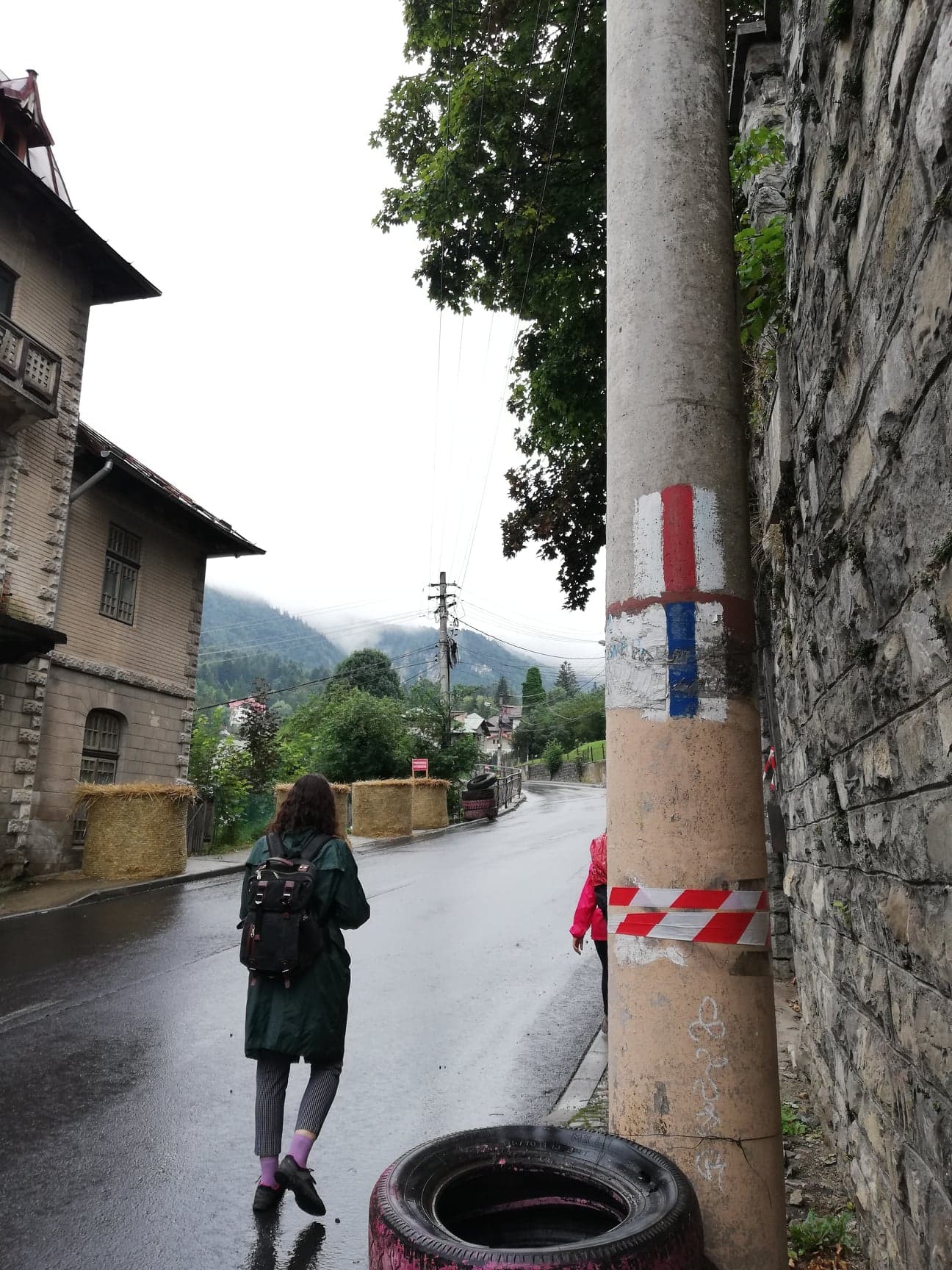
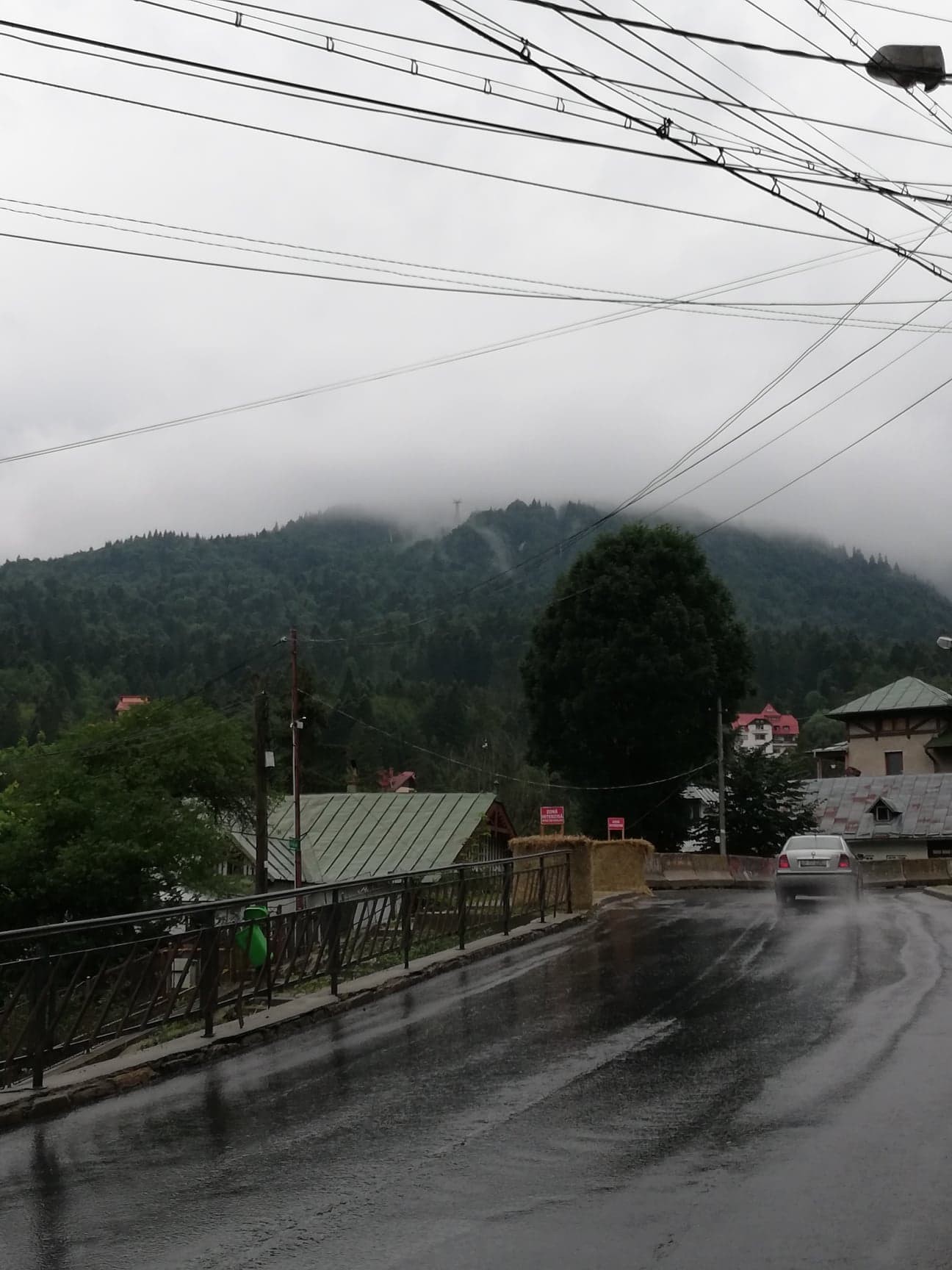
First I go to "Cabana Schiorilor" ( "The hut of the skiers" ) and then to "Popasul Haiducilor" ( "The Hut of the haiduces" ) where I enter the forest following the blue indicator to Poiana Stânii ( The Meadow of the sheepfold ). Soon, I encounter another sign on which is written Poteca Regală, meaning The Royal Path.
The Royal Path
The path is strongly visible because it is made out of cubical stone, so the chances of getting lost in here are quite minimal. The trail is perfect for the people who are beginners in this sport called hiking and what to enjoy a day being surrounded by mountains and forests.

Thus, people should wear at least some good mountain boots because, and especially when is raining, the path gets very slippery. Today, it is also a rainy day outside and I can tell you that is much harder to walk on such weather conditions. The path goes tangling through the green forest and from time to time encounters high rocks.

In almost one hour I am trekking to "Poiana Stânii" after I climb 300 meters in altitude ( since I have started at a height of 990 meters in Sinaia and got to 1285 meters in Poiana Stânii ). Did I already told you that I am now in The National Park Bucegi? Yes. I am and I have entered the park when I first begun to follow the path.
The meadow of The royal sheephold
In “Poiana Stânii Regale” the view opens up to the high mountain ridges belonging to The Eastern Slope of The Bucegi Massif. The meadow is largely spread creating a spectacular landscape that is looking like I starting passway through the mighty mountains.
I stay for a few minutes in the meadow to admire the landscape and take photos, then I go a little bit on the right where I enter another path leading to the "Franz Josef Cliffs".
The "Franz Joseph" Cliffs and the mighty mountains ahead
In the beginning, the trail is indicated by some wooden steps for about 15 to 20 meters. The footpath follows and leads me to the attraction that I am looking for, namely The "Franz Joseph" Cliffs, a natural geomorphologic monument named by King Carol I after the name of his friend Franz Joseph I of Austria.
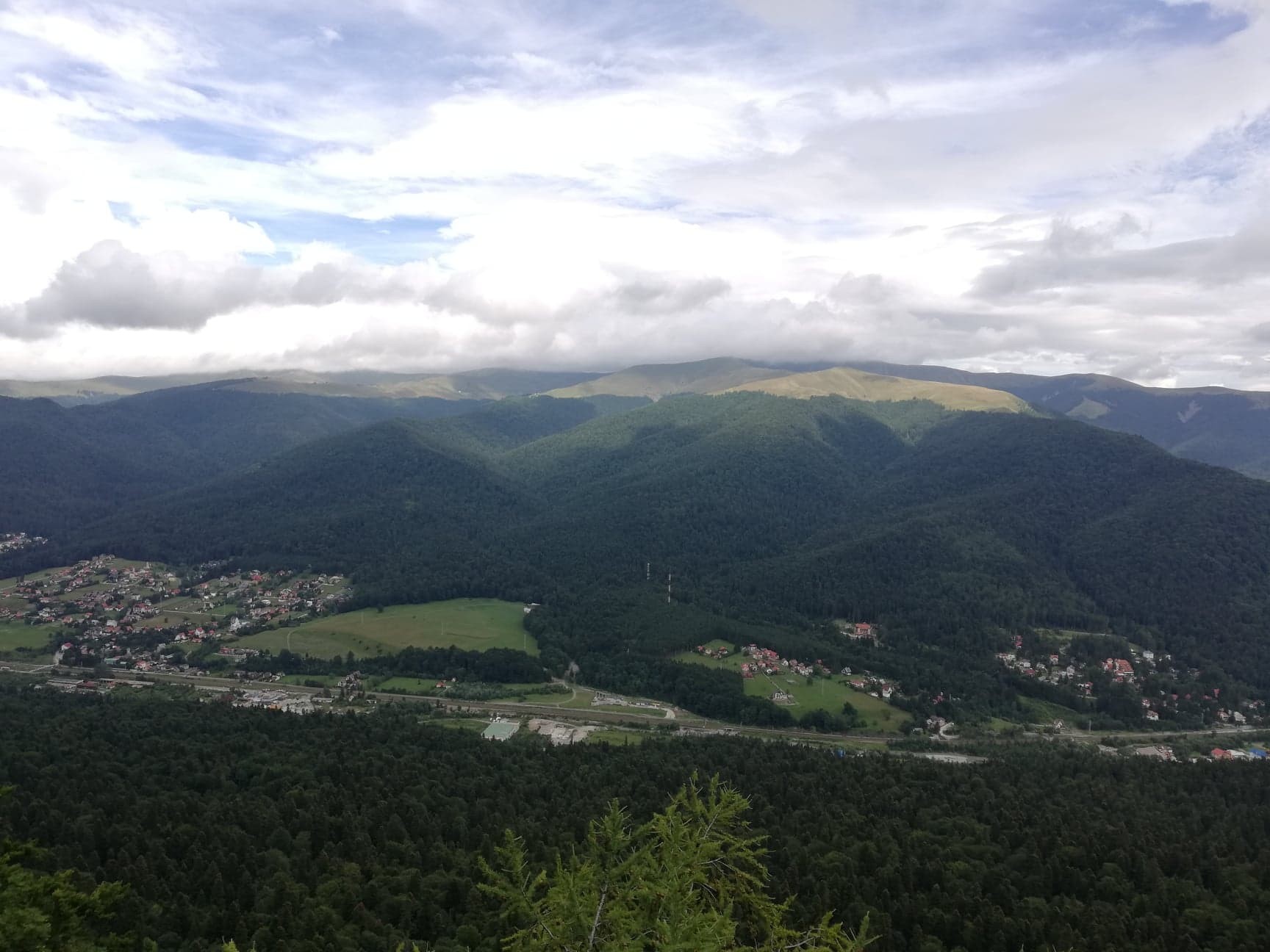
Here it is set up a viewpoint over the Prahova Valley from where a landscape including the Baiu Mountains, the Piatra Mare Mountains, the Postăvaru Mountain and, of course, the mountain cities located on this famous valley inside the mountains opens up ina wide picturesque aspect.
This spot is perfect for taking photos, lots of it. The view is breathtaking and it gets even nicer on sunny or cloudy weather because you can see how the clouds are covering the high parts of the mountains.
I am not by myself in this journey, but with my two best friends and here we spend some time to look over the mighty surroundings that are shaping ahead of us. After we get enough from the view, we leave this platform and go to another one situated on the right side of the previous one. From here we can actually see better the "Franz Joseph" Cliffs and its vertical wall on which alpinists can climb or boulder.
Also, we notice under the platform portraits representing the emperor Franz Joseph and the two romanian royals : the King Carol I and his wife, Elizabeth.
Stâna regală terrace, a good place to charge your batteries
It gets rainy and we are hungry, so we go back to Poiana Stânii Regale where we decide to stay and eat at the terrace with the same name. The tables are placed outside offering the people who eat here a beautiful view over the Bucegi Mountains.
Maybe because is a moody day there are not so many people around, so the food we order is served pretty fast and it is delicious. The place with the terrace is nice, the employees behave quite polite with the customers.
The acces to Poiana Stânii Regale ( the meadow and the restaurant with the terrace ) can be done either by following the Royal Path or by driving a car on the road that goes from Sinaia to Cota 1400 and finally to here.
After we enjoy our foods and because it gets increasingly cloudy, soon we go back on the Royal Path that we have been following earlier in the day and head back to Sinaia and to the train station.
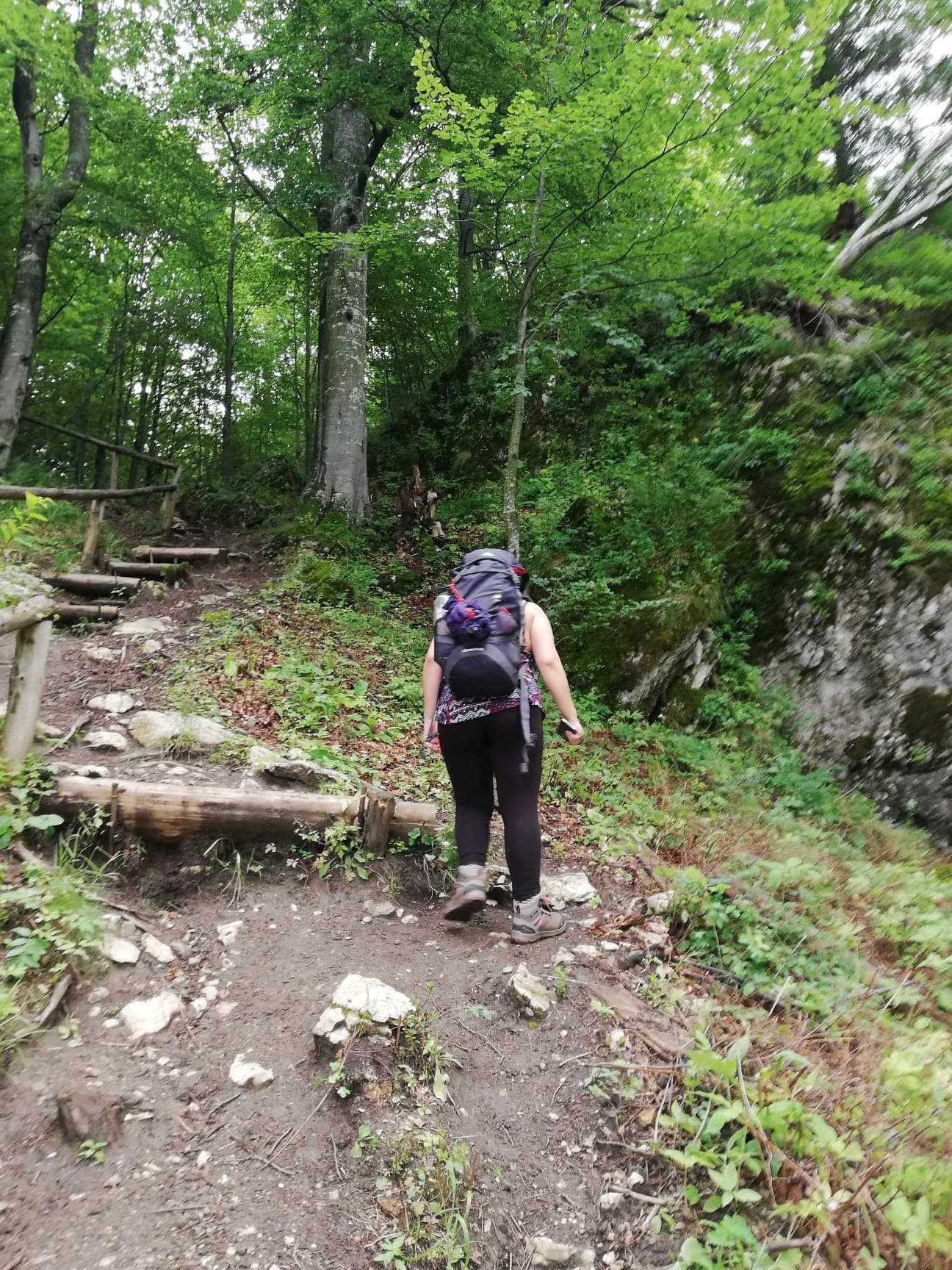
The one day journey is over and the conclusion is that everything we’ve been doing all day is totally worth it and both of the main attraction described above can be included in a one day trip from Bucharest to Sinaia and from here even further high.
